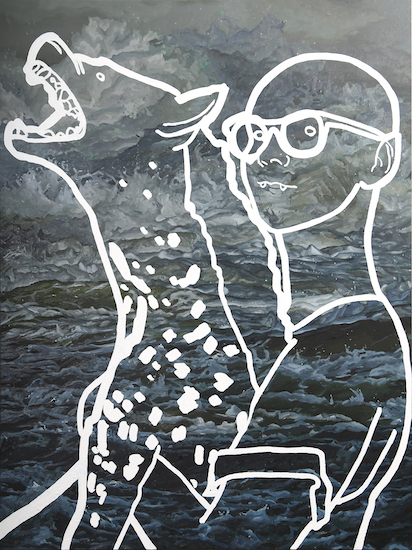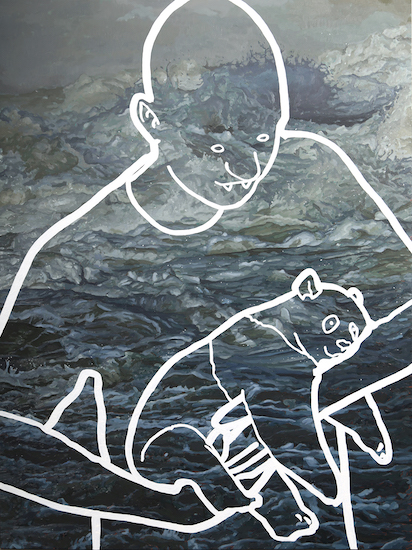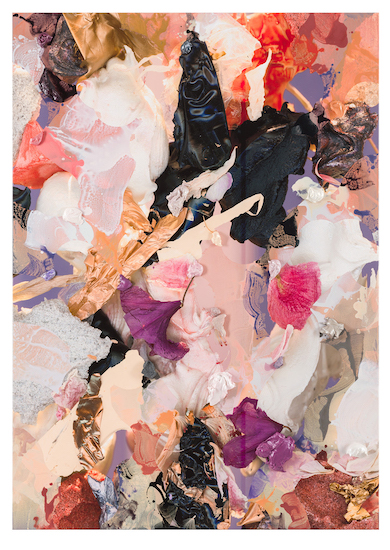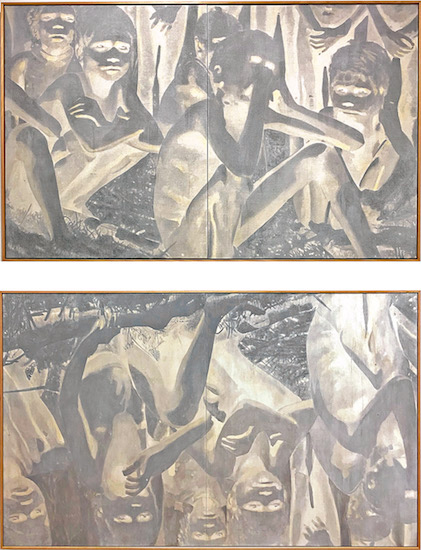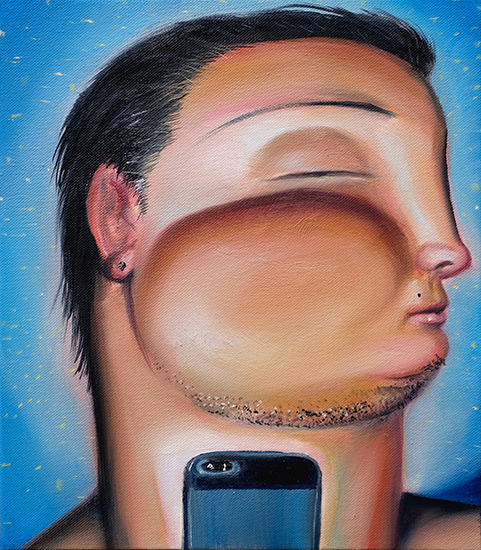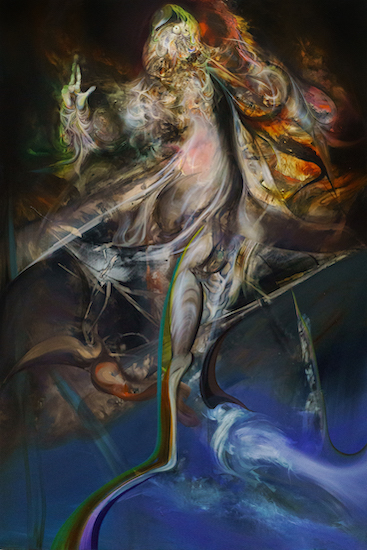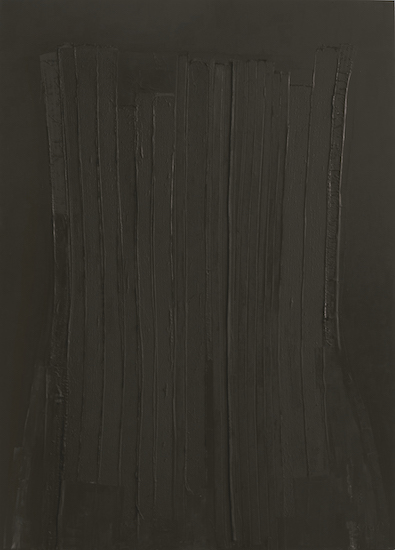Ten years ago, on 18 June 2010, Yavuz Gallery opened in the heart of Singapore’s museum district of Waterloo Street with its inaugural exhibition Open Frame: New landscape photography from China. Glancing into our metaphorical rear-view mirror at this decadal anniversary, 2020 provides us the opportunity to reflect on our past as we advance into the future.
Closer than they appear is a powerful two-part exhibition; the first taking place in our newest location, Sydney, with the counterpoint hosted in the gallery’s genesis city, Singapore in September.
Featuring 13 celebrated artists originating from across Asia-Pacific, Closer than they appear acts as a wormhole to connect the two galleries. Representing a diversity of generations, approaches, and viewpoints, artists embark on this spatial journey by exploring understandings of landscape, Country, and location; as well as temporally – evoking life, death, and rebirth. The infinite lines of time and space meet always at the crossroads of the here and now. We pause to look back at where we’ve been – another glance into our mirror, before resuming the journey ever forward.
ABOUT THE ARTISTS AND THEIR WORKS
Seventh-generation Australian Muslim artist Abdul Abdullah (b. 1986) is one of the most important young voices in contemporary Australian art. For Closer than they appear, Abdullah presents a painted diptych that continues his dynamic practice of exploring the complex feelings of displacement and marginalisation. His recent works centre around the concept of a tumultuous seascape as metaphor for the difficulties of journeying, with particular relevance to global migration and the refugee crisis. In these two new works, Tamed and Domesticated, the horizon line is obscured. With no waypoint, the audience is engulfed by the uncertainty of the raging sea. Overlaying the waves, two vampiric figures cradle and hold wild animals, reducing, suppressing and dismissing them. Abdullah is collected by numerous institutions, including: the National Gallery of Australia; Queensland Art Gallery | Gallery of Modern Art (Australia); Museum of Contemporary Art (Australia); and MAIIAM Contemporary Art Museum (Thailand). In 2019, he was awarded the inaugural Australian Muslim Artist Art Prize. He is also a four-time Archibald Prize finalist and four-time Sulman Prize finalist, the most prestigious art prizes in Australia – a rarity for an artist of his years.
Leading Filipino artist Marina Cruz’s (b. 1982) paintings evoke a feeling of nostalgia and highlight the value of family. Her works play with depictions of textures, colours and shapes of fabric and personal clothing, magnified from a certain spot and rendered in detail. The clothes that Cruz paints are part of a deeper fabric of remembering forgotten family narratives: her chance encounter with a heap of family heirlooms, and discovering the small dresses that her mother and her mother’s twin sister wore as children, which left a lasting impression on her. The damaged, brittle condition of the tiny dresses opened up a remarkable world from the past able to be codified through such objects. The paintingsBarren land but maybe not…and Green Plot invite the viewer to move between two modes of interpretation – formalist and minimalist. Cruz has exhibited widely including at the Art Gallery of New South Wales (Australia); Lopez Museum and Library (Philippines) and La Trobe Art Institute (Australia). She graduated from the University of the Philippines with a Bachelor of Fine Arts degree in 2003. She won the Juror’s Choice in the Government Service Insurance System Painting Competition in 2004, followed by the Grand Prize in the Philip Morris Philippine Art Awards in 2007. After winning the Ateneo Art Awards in 2008, she was granted a fellowship at the Visual Art Centre, La Trobe University in Australia, and on the same year received the Freeman Foundation Fellowship at the Vermont Studio Centre in USA.
New Zealand-born artist André Hemer (b. 1981) works within the expanded field of painting; his studies into light and colour merge traditional sensibilities with a contemporary digital approach. Central to his practice is an exploration of what it means to create paintings during a time in history in which the experience of an object is being continuously torn between states of physical and digital materiality. Recently, Hemer has also been exploring the formal qualities of naturalistic elements, such as flower petals. In These days (June 6, 18:58 CEST), he has incorporated images of dried bellflowers, as a more explicit link to the tradition of landscapes. Hemer is currently one of the most exciting artists of his generation and has been featured on the cover of Thames and Hudson’s publication and project 100 Painters of Tomorrow and picked as The Guardian newspaper’s top 10 “Stars of Tomorrow”. In 2016, he was awarded the prestigious New Zealand Art Foundation New Generation Award and the Wallace Arts Trust New Paramount Award with a six-month residency in ISCP, New York (USA). He has exhibited at Pataka Art + Museum (New Zealand), Total Museum of Contemporary Art (Korea), Guangzhou Art Centre (China), and is in the collections of Taiwan Museum of Art; Te Manawa Museum (New Zealand), Christchurch Art Gallery (New Zealand), and University of Canterbury (New Zealand), amongst others.
Mella Jaarsma is a Dutch-born (b. 1960) and Indonesian based multidisciplinary artist whose socially engaged practice examines cultural and racial diversity. Frequently inspired by traditional ritualistic ceremonies within Indonesia’s past, Jaarsma finds meaning embedded within clothing, the body and food. Feeding The Nation I investigates the concept of offering and explores how our bodies respond to the greed of contemporary world. Inspired by squatting figures during the act of worshipping in ancestral sculptures, the triptych operates like an archetype, questioning who eats who and what and who feeds who and what. The act of offering is an important part of Indonesia’s hybrid culture where giving something (back) is a way to rectify imbalances. Although often regarded as an act of gratitude, offering can also require a cost or a sacrifice. Jaarsma’s work has been presented widely in exhibitions in Indonesia as well as in international art events that include: 20th Biennale of Sydney (Australia); Suspended Histories, Museum Van Loon (Netherlands); Soul Ties, Singapore Art Museum; Third Asia Pacific Triennale at Queensland Art Gallery | Gallery of Modern Art (Australia), I eat you eat me, Centre of Academic Resources, Chulalongkorn University (Thailand); Gwangju Biennale, (Korea); Open2002at the 5th International Exhibition of Sculptures and Installations (Italy), Yokohama Triennale (Japan); and Accidentally Fashion at the Museum of Contemporary Art (Taipei).
A perfect dichotomy of colour and torment, Filipino artist Yeo Kaa (b. 1989) is known for her deceptively candy-coloured characters stuck in violent states of reality. Her stylised figuration brings to mind animation and fictional characters from children’s books, a fantasy world that exists only in dreams and imagination. Yet these elements cleverly camouflage haunting and daring images: a tableau reminiscent of a crime scene, decapitated and dismembered bodies, or a person out of a killing spree. Through her signature effervescent colour palette, the artist describes her internal struggles, desires and obsessions. While mostly drawn from personal narratives, her work also expands into broader reflections about humanity and society. Yeo Kaa created The best breakfast is when I’m in it during the pandemic lockdown in Manila where her alimentation was dictated/constraint by what was available such as non-perishable foods and pre-made cooking mix. Yeo Kaa studied Advertising at the College of the Holy Spirit Manila (Philippines) and in 2010 was awarded both the Grand Prize, University of Santo Tomas On-the-Spot Painting Competition and the Special Prize, Metrobank Art and Design Excellence. She has mounted significant solo exhibitions in Singapore, Philippines, Indonesia and Germany. In 2017, she was an artist-in-residence at Sarang Art Space, Jogjakarta (Indonesia) and Arteles Creative Centre, Haukijärvi (Finland) and in 2018 completed the A3 Projects Summer Residency, Berlin (Germany).
Born in Mackay, Queensland, Danie Mellor (b. 1971) is a contemporary artist of Mamu and Ngadjon Aboriginal rainforest heritage who lives and works in Bowral, New South Wales (Australia). Mellor’s multidisciplinary practice explores the intersections of contemporary and historic culture. His work traverses the breadth and complexity of historical narratives in considering both the recent and ancient past. Referred as ‘landspace’, Mellor’s revaluation of iconic landscape traditions is informed by his connection to place and ongoing preoccupation with Australia’s landscape. His strange dreamscapes reference formal properties and pictorial effects within photographs sourced from mid-19th century Colonial Australian photography. The large diptych, Forever, contemplates timelessness, and continues research into ideas around ancestral presence and how to convey the significance of remembrance that is part of Indigenous culture. Mellor has received several major awards, acquisitions and commissions, including the Museum of Contemporary Art(Australia) Sculpture Commission Matter Matters, the National Gallery of Australia Member’s Acquisition Fund and the 26th National Aboriginal and Torres Strait Islander Award. Mellor was recently appointed as a board member of the Museum of Contemporary Art (Australia).
Alvin Ong (b. 1988) mines the Western and Eastern art history canon to create fragmented yet intimate paintings, often containing hints of technology and signifiers of specific locations. Released from the limitations of time and space within the physical world, Ong’s figures merge and collide across different perspectival planes. Seen Unseen references the Catholic prayer of the“Credo” or “Apostles’ Creed”, in which the Almighty is referred to as “maker of all that is seen and unseen”. Simultaneously, “seen unseen” speaks to the action of “unseeing” a text message on social media. At the age of 16, Ong became the youngest winner of the UOB Painting of the Year Award, Singapore (2005). His works have been exhibited at the Singapore Art Museum; Asian Civilizations Museum (Singapore); Peranakan Museum (Singapore); Northampton Contemporary (UK); National Portrait Gallery (UK) and Royal Academy of Arts (UK). His works are collected by the ILHAM Gallery (Malaysia); the Ingram Collection (UK); X Museum (China) and the Victoria & Albert Museum (UK).
Investigating the frontier between representation and abstraction, Singaporean artist Ruben Pang (b. 1990) is best known for his vibrant paintings on aluminium where he uses the metallic qualities of the panels to render spectral traits to his ethereal figures. Playing with the movement and smoothness of the surface, Pang embraces chance in the way he spreads the paint and the alkyl-resin on the aluminium. All is Well and A Heart Beats in Triplets are characteristic of his intuitive style highlighting spontaneity as an essential part of his technique and creative process. Pang is a renowned painter but also works across sculpture, music and performance. Pang has widely exhibited across Asia, Europe and the United Sates including at Vestfossen Kunstlaboratorium (Norway); MO.CA Centro per le nuove culture (Italy); the Singapore Art Museum; and Paul Allen Brain Institute (USA). His works are collected by the Singapore Art Museum and the Tiroche DeLeon Collection (Israel).
Of Māori (Ngāi Tahu, Kati Mamoe and Ngāti Kahungunu) and Scottish (Clan Cameron of Erracht) descent, New Zealander artist Fiona Pardington (b. 1961) presents works surrounding representation and remembrance of taonga, or treasures of the Māori indigenous culture. Taking particular focus on the huia, a native wattlebird driven to extinction by the European settlers, Pardington presents a photo diptych and a gold-plated sculpture. The works recover the cultural significance and rare qualities of the sacred bird, while functioning as a memento mori, a sombre reminder of society’s greed and its consequences for the natural world. At the heart of Pardington’s practice is an abiding concern with emotion and affect. A practitioner with over three decades experience as an exhibiting artist, she has explored the ongoing capacities of photography by attending to that which is hidden or unseen in the photograph as much as what it may represent. Herwork has been included in a number of significant group exhibitions and biennales including Middle of Now | Here, Honolulu Biennial (Hawaii); lux et tenebris, Momentum Worldwide (Germany); The Best of Times, The Worst of Times. Rebirth and Apocalypse in Contemporary Art, Ukraine Biennale Arsenale 2012; and Ahua: A Beautiful Hesitation, 17th Biennale of Sydney (Australia). Her work is represented in several major international museum collections including the Musée du Quai Branly (France); National Gallery of Canada; Queensland Art Gallery / Gallery of Modern Art; (Australia); National Gallery of Victoria (Australia); National Gallery of Art, Washington D.C (USA); Christchurch Art Gallery (New Zealand); The University of Auckland (New Zealand); Museum of New Zealand Te Papa Tongarewa; Auckland Art Gallery (New Zealand); and Govett Brewster Art Gallery (New Zealand).
Pinaree Sanpitak (b. 1961) is unquestionably one of Thailand’s most important and well-respected contemporary artists. Her relational and conceptual practice has centred around the explication of aspects of human experience and sensorial perception. Sanpitak frequently investigates womanhood through abstraction, utilising the tactile qualities of painting and selected emotive materials such as fabric. The scale and materiality of Body of Fragmented Memories V forces the viewer into an intimate inspection, presenting an abstracted form of a female body. Over the past 30 years, Sanpitak has produced an expansive body of work across diverse media and techniques including painting, collage, drawing, printmaking, sculpture, installation and performance. Sanpitak’s work is held in private and institutional collections in Australia, Japan, Singapore, Thailand, Turkey and the United States. She has exhibited at Los Angeles County Museum of Art (USA); Chrysler Museum of Art (USA); Museum voor Moderne Kunst Arnhem (The Netherlands); National Gallery Singapore; Singapore Art Museum; and Museum of Modern Art Tokyo (Japan), amongst others. Her recent site-specific installations include The Roof, commissioned by Arts Brookfield, at the Brookfield Place Winter Garden in 2017 (USA); and Breast Stupa Topiary at Jim Thompson Farm in 2018 (Thailand).
One of Southeast Asia’s leading photographic artists, Manit Sriwanichpoom (b. 1961) has made a career of icon-study in the Thai context. Working across photography, performance, video and painting, he scrutinises the contemporary social and political complexities of Thailand – an interest he has developed in his previous career as a photojournalist. Sriwanichpoom is perhaps best known for his ongoing ‘Pink Man’ photographic series. The eponymous character, a man dressed in a pink silk tuxedo pushing a matching shopping cart, gets inserted impassively into violent political scenes or in front of major monuments. A critique of consumer culture in Thailand, Pink Man Meets Lord Buddha represents Sriwanichpoom’s iconic figure Pink Man in sculptural form. He has exhibited worldwide, including in the Centre Pompidou (France); The Asia Pacific Triennial, Queensland Art Gallery | Gallery of Modern Art (Australia); Photoquai (France), Gwangju Biennale (Korea) and the Venice Biennale (Italy). His works are collected by important museums including the Maison Européenne de la Photographie (France), DZ Bank (Germany), Fukuoka Asian Art Museum (Japan), National Gallery of Australia, and National Gallery Singapore. In 2007 he was awarded the Higashikawa Overseas Photographer Prize from Japan and 2014 the Chevalier des Arts et Lettres by French Ministry of Culture.
At the heart of internationally acclaimed Rodel Tapaya’s (b. 1980) work is his ongoing amalgamation of mystical narrative and contemporary reality within the framework of memory and history. Utilising a range of media – from large acrylic on canvasses to an exploration of under-glass painting, traditional crafts, diorama, and drawing – Tapaya filters his observations of the world through folktales and pre-colonial historical research, creating whimsical montages of his characters. In Lost in the Woods, he depicts a Tibalang, a mythical creature in Filipino folklore which can transform his appearance in order to lead humans on the wrong path. Leaving them feeling helpless, lost and scared, Tapaya relates this to current global pandemic, emotions that are particularly resonant to us all in these uncertain times. Tapaya is one of the most active artists in Southeast Asia, and his breakthrough came when he was awarded the coveted Top Prize in the Nokia Art Awards, which allowed him to pursue intensive drawing and painting courses at Parsons School of Design, New York (USA) and the University of Helsinki (Finland). In 2011, Tapaya was awarded the coveted Asia Pacific Breweries Signature Art Prize. He is collected by the National Gallery of Australia; the Mori Museum (Japan); the Singapore Art Museum; Buxton Contemporary (Australia); Art Gallery of New South Wales (Australia), amongst others.
Cross’ ‘Reflect’ is powered by Lūpa, a media player for art galleries. More information at lupaplayer.com
